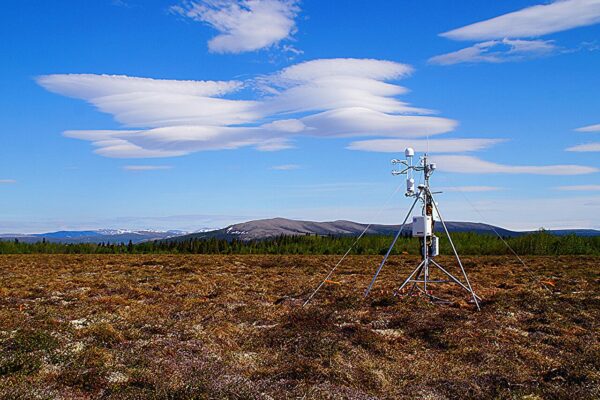Marine Pollution: 10 Major Ocean Polluters Other Than Oil Spills and Plastics
Ocean pollution has become a huge problem in the modern time with humankind pillaging natural sources for its own selfish means, polluting land and ocean all the while
With the advent of large-scale agricultural and industrial activities, millions of tons of waste and other pollutants enter the ocean each year. There are so many major factors polluting the oceans on daily basis. Some of these pollutants including plastic waste end up on beaches, washed in with the waves and tides. Other debris sinks to the seafloor, where it is eaten by marine animals that mistake it for food, and some get caught in ocean gyres.
While plastics and oil spills contribute to a huge proportion of ocean pollution, there are some lesser-known pollutants that are equally responsible for contaminating the open waters. From the early to mid-20th century, the majority of scientists thought that oceans were huge enough to be able to weaken the amount of pollution being emptied into them, believing that pollution was harmless to marine life.
Ocean pollution is a complex combination of toxic metals, manufactured chemicals, plastics, urban and industrial waste, agricultural runoff, and sewage. Over 80 percent of contamination arises from land-based sources and reaches the oceans through rivers, runoffs, airborne pollutants, and direct dumping.
While finding the solution to ocean pollution is imperative, it is important to first pinpoint the contamination sources. Addressing ocean pollution is crucial and to understand it we have listed the 10 major ocean polluters that are not plastics and oil spills.
Industrial Waste
Over the years, industrial waste has seen enormous growth, finding its way into the marine ecosystem. Chemicals and heavy metals from industrial and municipal wastewater pollute the waterways, most of which end up in the oceans. This contamination often reduces an organism’s life span and fertility.
Evidently, unintended industrial growth, usage of invalid technologies, and absence of strict laws and policies are some of the reasons that are accountable for industrial waste polluting the oceans.
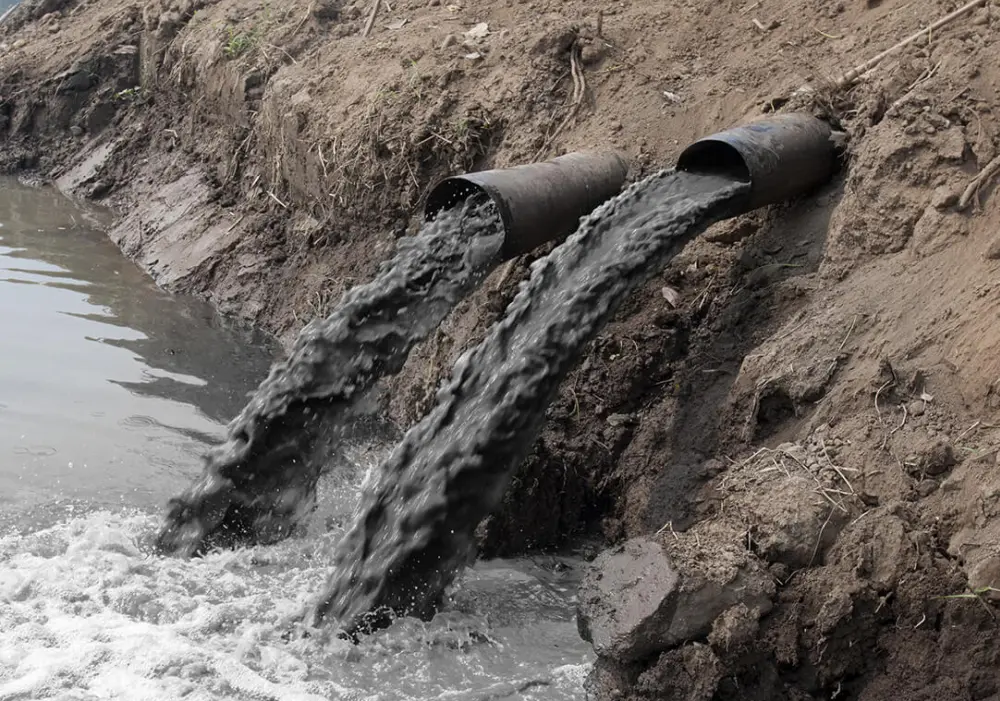
Image: RAWMEC
Toxic components from this waste can cause behavioral changes, physical degradation, and mental impairment in marine animals, sometimes leading to fatal consequences. Much of marine life absorbs harmful metals such as copper, mercury, and lead from industrial waste.
Mercury Pollution
Mercury is one of the pervasive pollutants contaminating the world’s oceans. The major source of mercury is the continuous usage of coal burning in homes and industries. When coal burns, mercury in it vaporizes and enters the atmosphere, ultimately washing into the sea. Mining for gold is also a source of mercury, as it is used to dissolve gold from the ore.
The chemical element can collect too high levels in predatory fish such as tuna and swordfish which are consumed by humans. Highly toxic to marine life, mercury can cause serious health problems when it reaches certain levels.
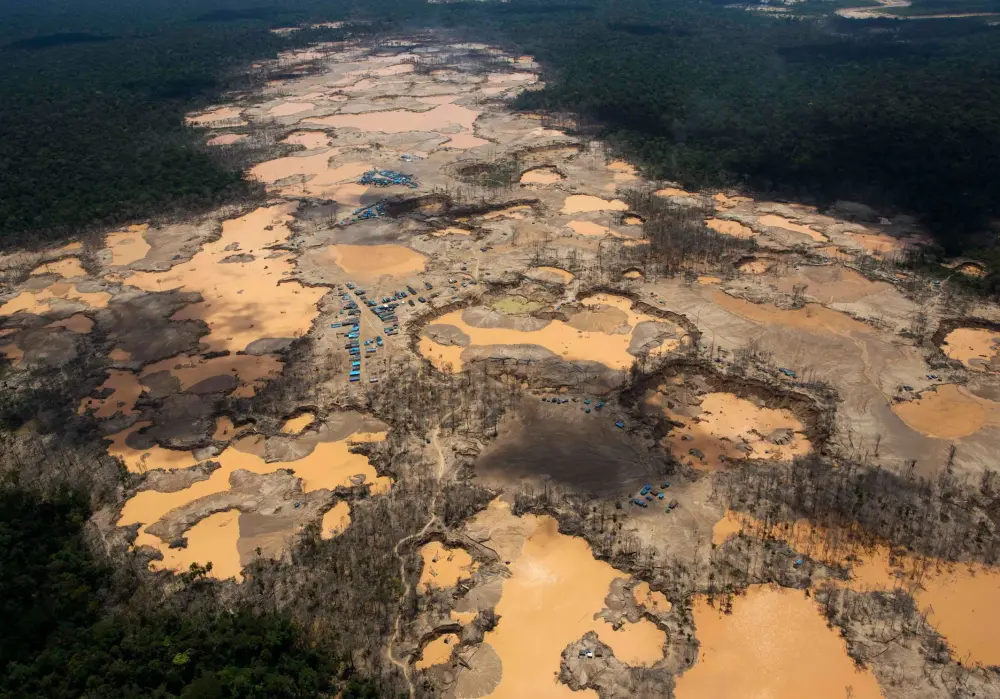
Image: Rodrigo Abd/AP
Mercury pollution enters the oceans and other waterways along different pathways that are related to different sources. It is ubiquitous in the world’s oceans and coastal waters, and pollutes fish and other seafood that are an important source of nutrition and protein for people across the world.
Eutrophication aka Nutrient Pollution
Nutrients are vital for plant growth, but as they say that too much of anything is bad, an excess of nutrients in water can have many harmful health and environmental effects. A surplus of nutrients, mainly nitrogen and phosphorus, in water instigates a process called eutrophication, also known as nutrient pollution.
Eutrophication decreases oxygen levels, reduces the quality of water, makes the water uninhabitable for fish, affects the breeding process within marine life, and declines the principal efficiency of the oceanic ecosystem. Often it is not the type of material, rather its concentration defines whether a substance is a pollutant.
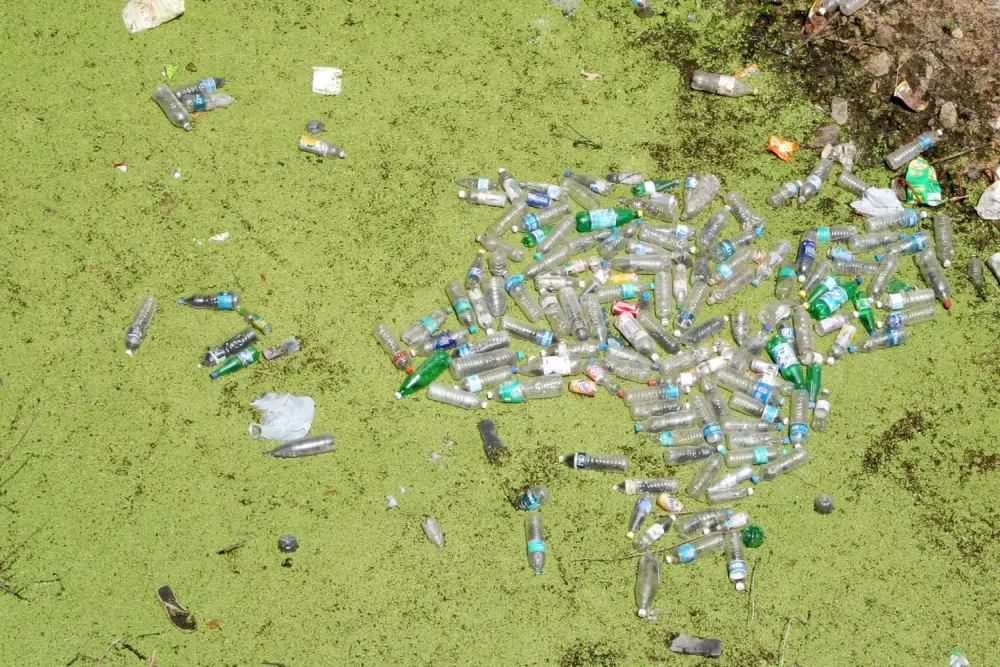
Image: Water Pollution Org
For instance, the nutrients nitrogen and phosphorus are essential elements for plant growth, however, their overabundance can spurt excessive growth of algae, starting an event known as algal bloom. Unsafe algal blooms, which are also known as red tides, brown tides or green tides, grow quickly, can adversely affect marine life and also result in hypoxia and dead zones. Consequently, many species living in such areas either die or leave the area if they are mobile.
Toxins and Chemical Pollution
Times were simpler for the environment when humankind didn’t have much access to chemicals and technology. Those were the times when the ecosystems thrived with minimum contamination. However, as humankind advanced, things deteriorated for nature and its other inhabitants. Chemical products such as pesticides, fertilizers, and herbicides are commonly used by farmers to increase yields and protect against insects and diseases. Other chemicals that are used in industries are a huge polluting source.
When rainfall comes, these chemicals flow into gutters, streams and rivers, eventually ending up in oceans. These chemical compounds create a nutritional imbalance in the water, leading to eutrophication that can consequently destroy the natural balance of the ecosystem.
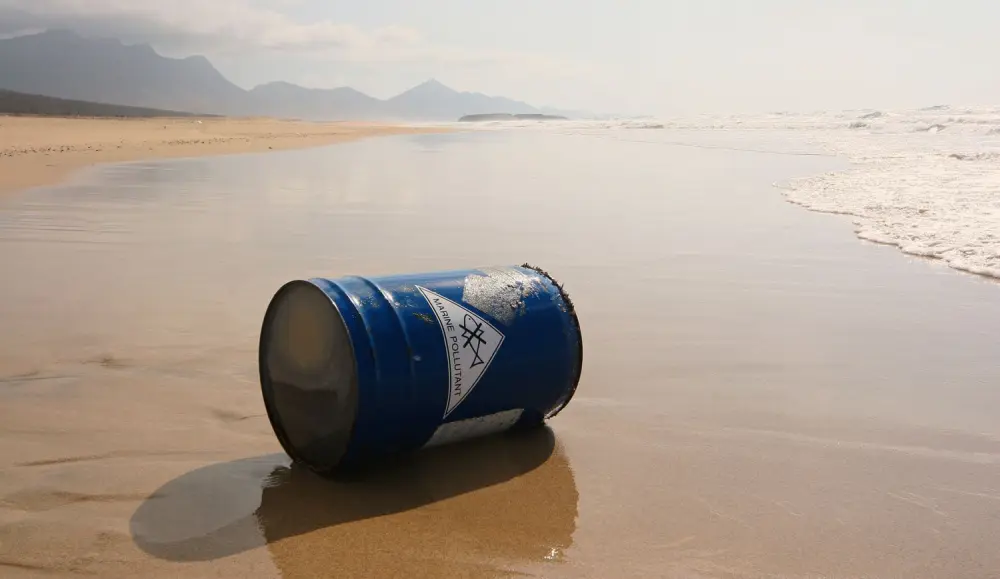
Image: Water Pollution Org
The persistent toxic chemicals such as pesticides, DDT, PCBs, furans, TBT, radioactive waste and dioxins usually get lodged in the tissue cells of the marine animals and lead to bioaccumulation obstructing life underwater, and sometimes leads to alterations in aquatic life.
Waste and Debris
Oceans have become a dumping site for terrestrial waste ranging from huge plastic waste to cigarette butts. Much of this litter is carried by wind to the ocean, where it, unfortunately, does not decompose and contaminates marine habitats.
Oceans contain a wide variety of marine debris, including tiny microplastics, smaller than 5 mm, discarded fishing gear and abandoned vessels of shipwrecks. Marine waste and debris have adversely impacted hundreds of marine species, resulting in physical or mental damage to them.
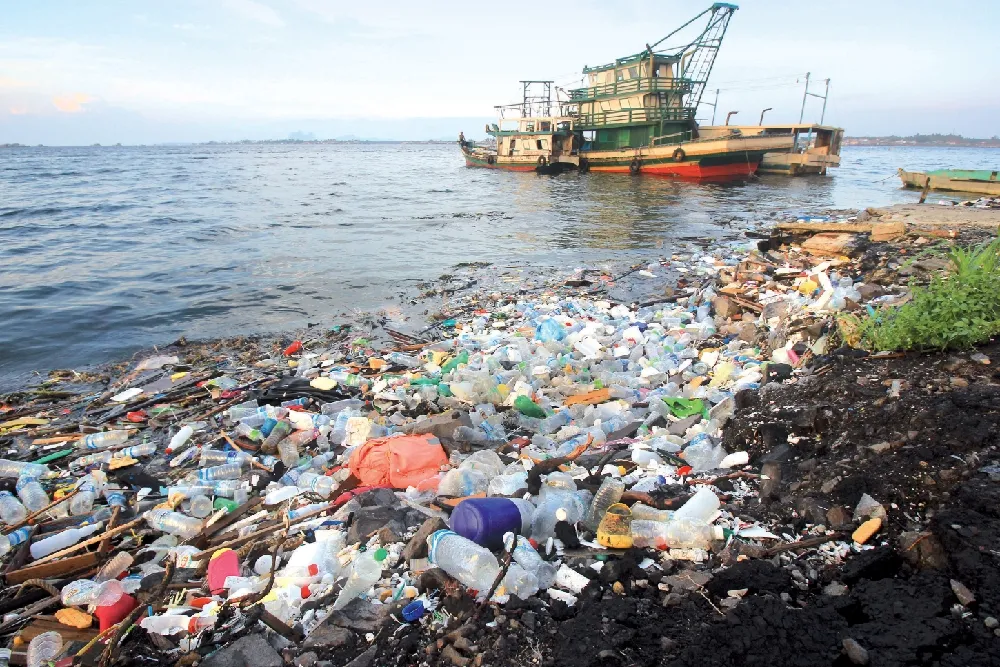
Image: Open Edition
Almost 90 percent of marine debris comes from land and enters open waters through littering, incompetent waste management systems, stormwater discharge, and severe natural events such as tsunamis. This waste sometimes entraps marine animals, causing death, and contaminating the entire ecosystem with toxins.
Acidification
It may sound strange as to how the process of acidification can pollute oceans, but acidification is one of the major and ongoing types of ocean pollution. As it is widely known that oceans act as a natural carbon sink, meaning they absorb carbon dioxide from the earth’s atmosphere. However, with increased emissions, these open waters are becoming acidic in nature, leading to the acidification of oceans.
When CO2 in the atmosphere dissolves in the oceans, reacts with the water to form carbonic acid. The carbonic acid breaks down to form bicarbonate and hydrogen ions, which make the oceans more acidic.
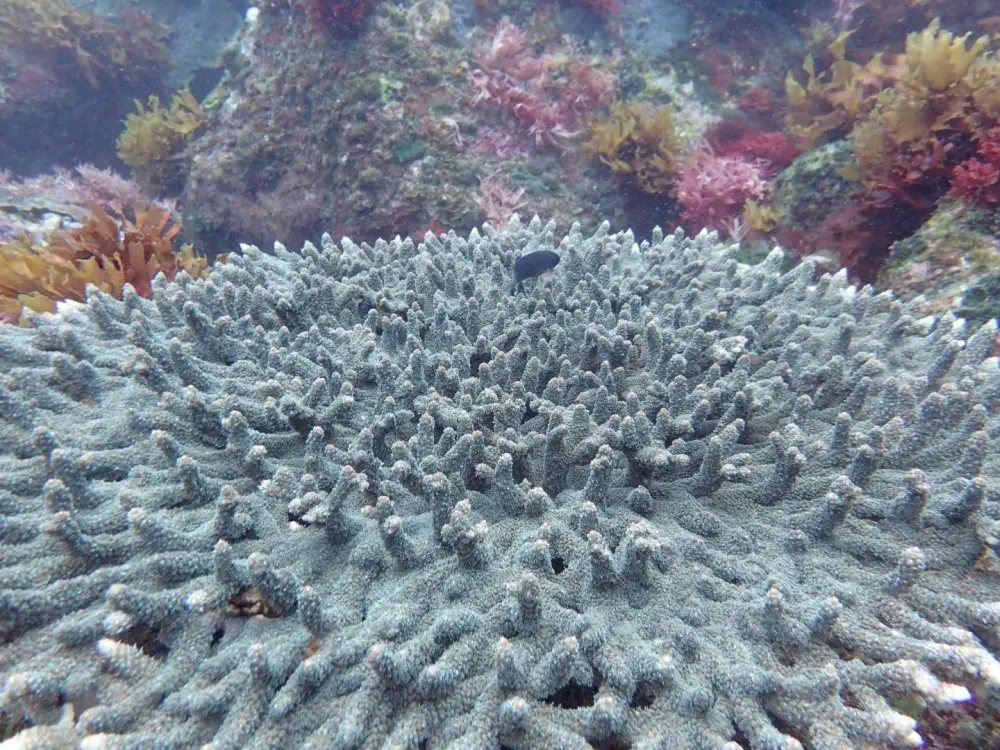
Image: Marco Milazzo
Ocean acidification is a huge polluting source, which has vastly affected coral reefs and shell formation in shellfish owing to the acidification-induced dissolution of calcium carbonate structures. The imbalance in the pH level in the ocean disrupts the natural biochemistry that is essential for a healthy marine ecosystem that is required for the survival of different oceanic species.
Fossil Fuels
While the world is trying to shed off its dependency on fossil fuels, there are many governments and companies that are still mining for fossil fuels. Deep-sea mining and oil drilling are the two of the most disruptive fossil fuel hunts.
These two are significant contributors to ocean pollution as they increase the water column’s toxicity, create sediment plumes, disrupt the seafloor and create dangerous possibilities for massive oil spills. After all, hardly anyone can forget the 2010’s Deepwater Horizon oil spill in the Gulf of Mexico.
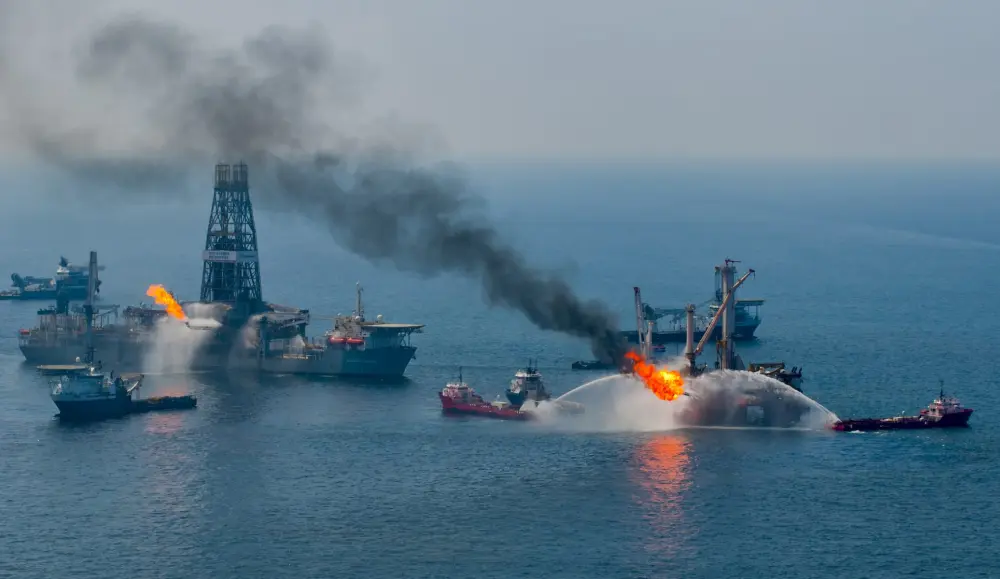
Image: @Lighttouch/Open Access Government
Moreover, fossil fuel burning also exacerbates carbon emissions, triggering a faster cycle of ocean acidification. Another problem with burning fossil fuels is the residual ash that is released into the atmosphere, which upon getting mixed with vapor in clouds leads to acidic rain.
Sewage
Have you ever stopped to wonder where does the untreated sewage go? After all, not all sewage gets treated. Around the globe, sewage flows into rivers and seas, putting all life at risk. This waste carries organic waste and nutrients that can cause oxygen depletion, as well as disease-causing bacteria and parasites.
Wastewater pollution from sewage discharge into the oceans makes corals vulnerable to disease-causing viruses, bacteria, or other microorganisms. Outbreaks of two of the most common coral diseases, white pox and black band disease, have been traced back to wastewater pollution.
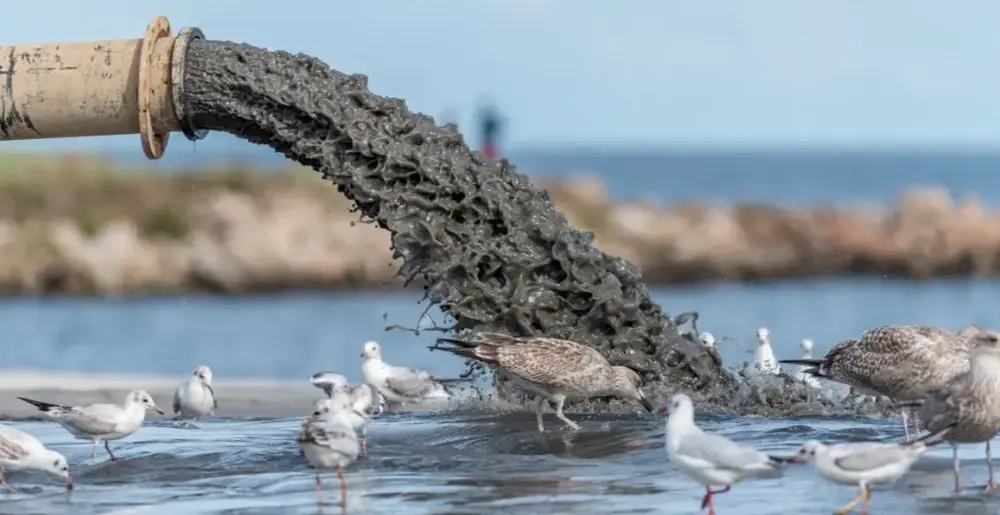
Image: Jon Shore
In November 2021, a study titled “Mapping global inputs and impacts from of human sewage in coastal ecosystems” was published in peer-reviewed open access scientific journal PLOS One. The study took a broad look at the problem by studying the amounts of fecal pathogens and nitrogen flushed into the open waters in human wastewater at around 135,000 sites around the world.
Maritime Transportation
Maritime transportation is while the effective mode of transporting things or people, has been a source of oceanic pollution. Ships contribute to major contaminating factors in the open waters including oil discharge, lost cargos, leaked cargo residues, shipwrecks, and noise pollution.
Noise pollution is usually linked with industrial sites or construction worksites, but sounds can travel further and longer underwater than they can in the air. It can confuse marine animals that depend upon sonar signals to feed, mate and navigate their way around the oceans. Moreover, it can shorten their lifespans and push entire species towards the brink of extinction.
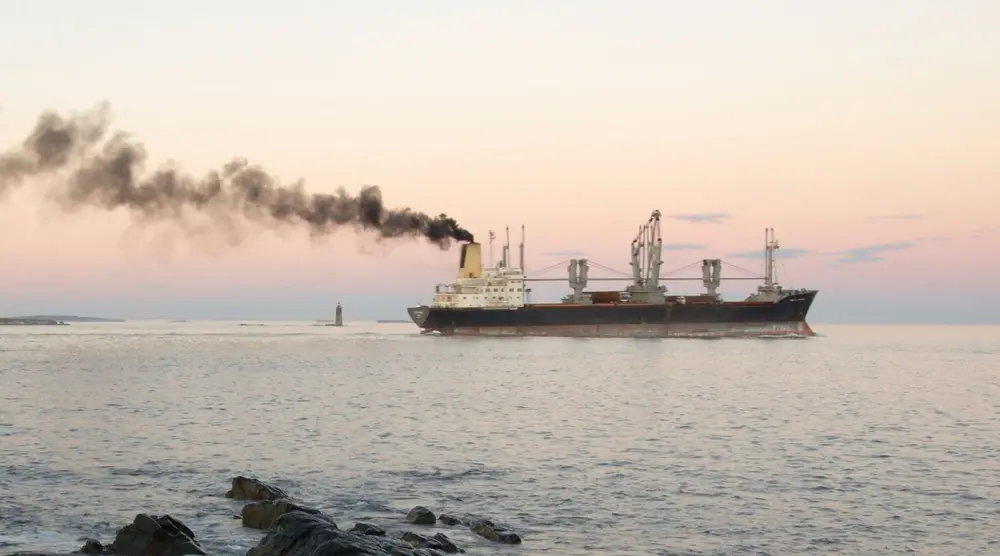
Image: Clear Seas
Marine transportation can carry aquatic invasive species from one place to other, threatening the survival of local species. It also generates air pollution, greenhouse gas emissions, and oil and chemical spills that negatively impact marine ecosystems.
Air Pollution
Atmospheric pollution or commonly known as air pollution is a big factor contributing to marine pollution. The wind usually picks up litter and debris that can be carried for miles, consequently ending up in the oceans. Many objects swirling in and around the Great Pacific Garbage Patch are a result of windborne litter.
Air pollution is also responsible for carrying off the iron, carbonic acid, nitrogen, silicon, sulfur, pesticides and other toxins into the marine ecosystems. The deposition of nitrogen in the atmosphere around coastal regions often results in eutrophication.

